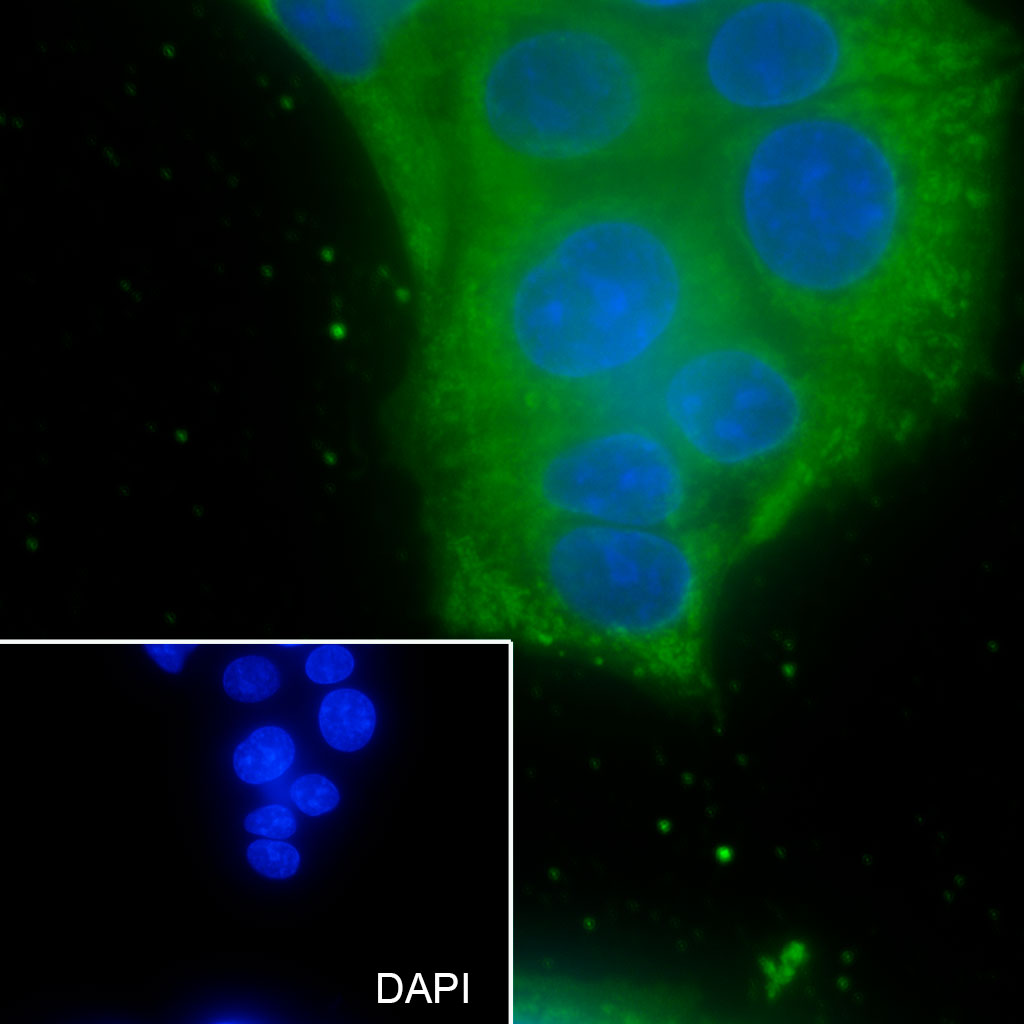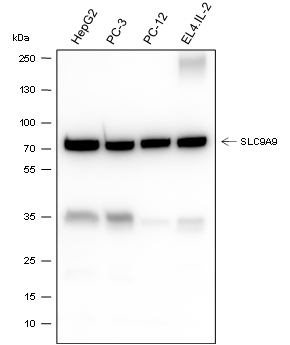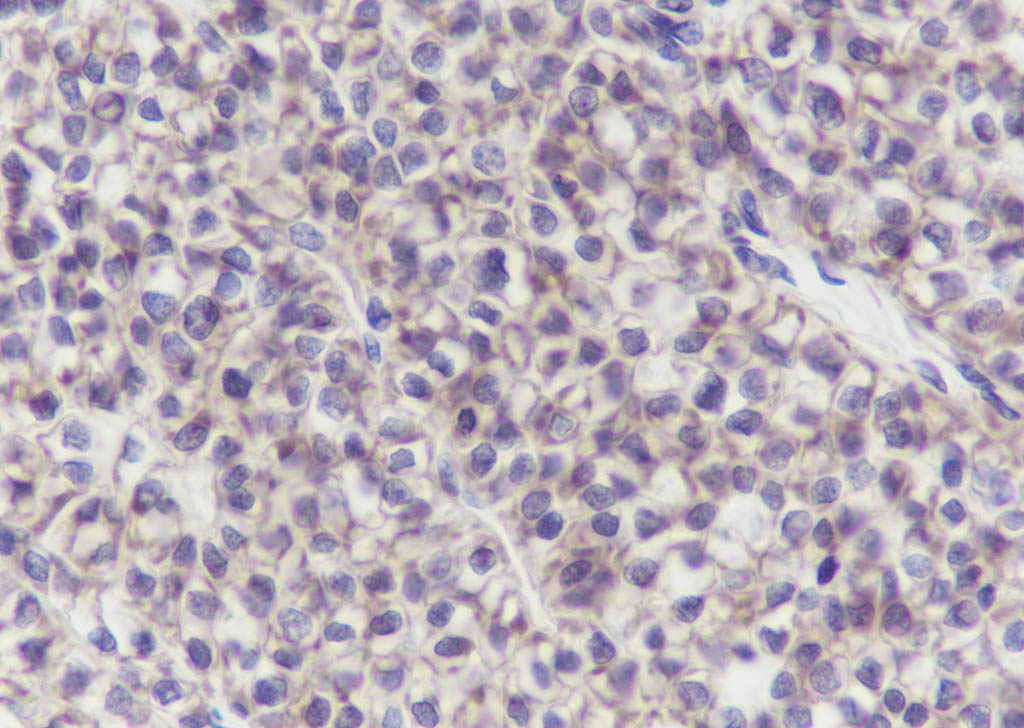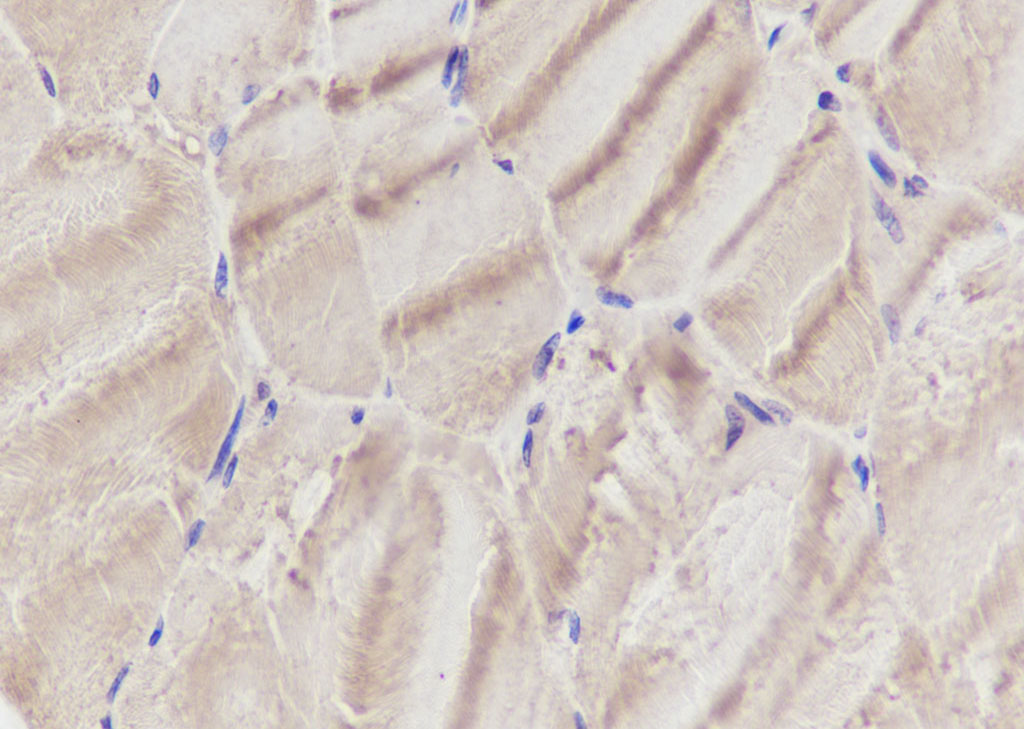SLC9A9 Recombinant Mouse mAb
SLC9A9 Recombinant Mouse mAb
- 产品详情
- 实验流程
- 背景知识
Application
| WB, IHC-P, IHC-F, IF, ICC |
|---|---|
| Host | Rabbit |
| Clonality | Recombinant |
| Physical State | Liquid |
| Isotype | IgG2a, Kappa |
| Purity | affinity purified by Protein G |
| Buffer | 0.01M TBS (pH7.4) with 1% BSA, 0.02% Proclin300 and 50% Glycerol. |
| SUBCELLULAR LOCATION | Late endosome membrane; Multi-pass membrane protein. |
| SIMILARITY | Belongs to the monovalent cation:proton antiporter 1 (CPA1) transporter (TC 2.A.36) family. |
| DISEASE | Note=A chromosomal aberration involving SLC9A9 has been found in a family with early-onset behavioral/developmental disorder with features of attention deficit-hyperactivity disorder and intellectual disability. Inversion inv(3)(p14:q21). The inversion disrupts DOCK3 and SLC9A9. Defects in SLC9A9 are a cause of susceptibility to autism type 16 (AUTS16) [MIM:613410]. Autism is a complex multifactorial, pervasive developmental disorder characterized by impairments in reciprocal social interaction and communication, restricted and stereotyped patterns of interests and activities, and the presence of developmental abnormalities by 3 years of age. Most individuals with autism also manifest moderate mental retardation. AUTS16 can be associated with epilepsy. |
| Important Note | This product as supplied is intended for research use only, not for use in human, therapeutic or diagnostic applications. |
| Background Descriptions | Slc9a9 (Sodium/hydrogen exchanger 9) or NHE9 may act in electroneutral exchange of protons for Na(+) across membranes. Four isoforms of the Na+/H+ exchanger (NHE6-NHE9) are distributed to intracellular compartments in human cells. They are localized to Golgi and post-Golgi endocytic compartments as follows: mid- to trans-Golgi, NHE8; trans-Golgi network, NHE7; early recycling endosomes, NHE6; and late recycling endosomes, NHE9. The intracellular localization of the NHEs is established by the balance of transport in and out of the post-Golgi compartments as the dynamic membrane trafficking. Their in vivo function is to regulate the pH and monovalent cation concentration in these organelles. |
| Target/Specificity | Ubiquitously expressed in all tissues tested. Expressed at highest levels in heart and skeletal muscle, followed by placenta, kidney, and liver. Expressed in the brain, in the medulla and spinal cord. |
|---|---|
| Dilution | WB=1:500-1:1000,IHC-P=1:100-500,IHC-F=1:100-500,ICC/IF=1:50,IF=0 |
| Format | 0.01M TBS(pH7.4) with 1% BSA, 0.09% (W/V) sodium azide and 50% Glyce |
| Storage | Store at -20 °C for one year. Avoid repeated freeze/thaw cycles. When reconstituted in sterile pH 7.4 0.01M PBS or diluent of antibody the antibody is stable for at least two weeks at 2-4 °C. |
Research Areas
For Research Use Only. Not For Use In Diagnostic Procedures.
Application Protocols
Provided below are standard protocols that you may find useful for product applications.
BACKGROUND
This product as supplied is intended for research use only, not for use in human, therapeutic or diagnostic applications.
终于等到您。ABCEPTA(百远生物)抗体产品。
点击下方“我要评价 ”按钮提交您的反馈信息,您的反馈和评价是我们最宝贵的财富之一,
我们将在1-3个工作日内处理您的反馈信息。
如有疑问,联系:0512-88856768 tech-china@abcepta.com.























 癌症的基本特征包括细胞增殖、血管生成、迁移、凋亡逃避机制和细胞永生等。找到癌症发生过程中这些通路的关键标记物和对应的抗体用于检测至关重要。
癌症的基本特征包括细胞增殖、血管生成、迁移、凋亡逃避机制和细胞永生等。找到癌症发生过程中这些通路的关键标记物和对应的抗体用于检测至关重要。 为您推荐一个泛素化位点预测神器——泛素化分析工具,可以为您的蛋白的泛素化位点作出预测和评分。
为您推荐一个泛素化位点预测神器——泛素化分析工具,可以为您的蛋白的泛素化位点作出预测和评分。 细胞自噬受体图形绘图工具为你的蛋白的细胞受体结合位点作出预测和评分,识别结合到自噬通路中的蛋白是非常重要的,便于让我们理解自噬在正常生理、病理过程中的作用,如发育、细胞分化、神经退化性疾病、压力条件下、感染和癌症。
细胞自噬受体图形绘图工具为你的蛋白的细胞受体结合位点作出预测和评分,识别结合到自噬通路中的蛋白是非常重要的,便于让我们理解自噬在正常生理、病理过程中的作用,如发育、细胞分化、神经退化性疾病、压力条件下、感染和癌症。









